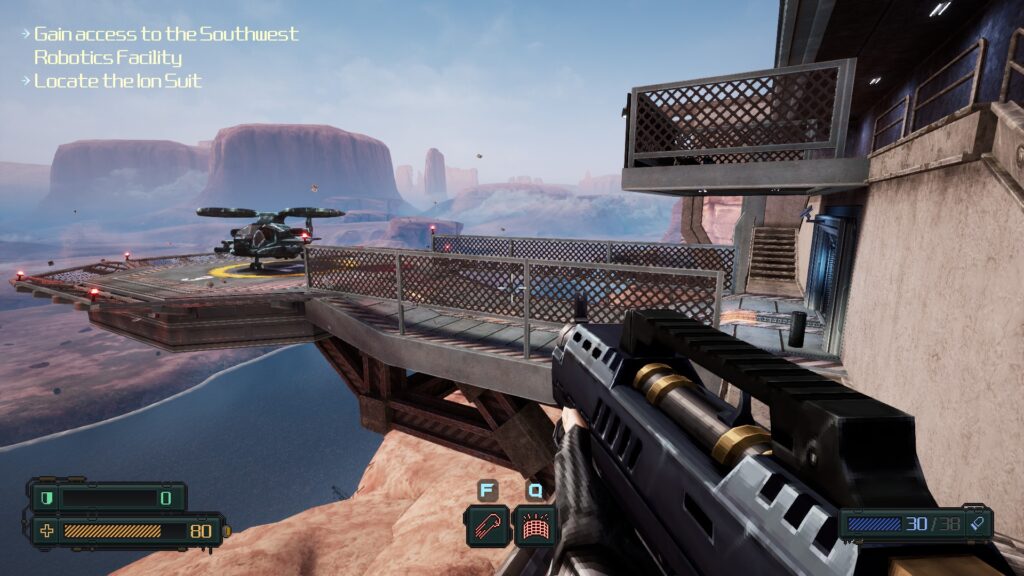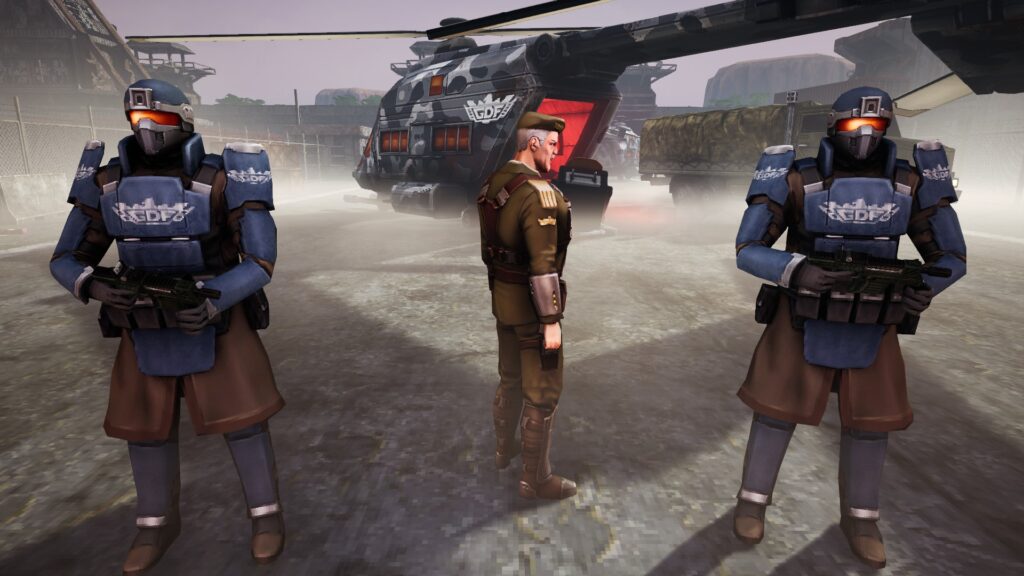In the autumn of 2022, fans of Ion Fury were eagerly awaiting its long-delayed expansion, Aftershock. Out of nowhere, publisher 3D Realms announced something very different. This was Phantom Fury, a fully-3D sequel indebted to the shooters of the early 2000s, and somehow linked with 1998’s SiN. It was to be developed not by Voidpoint, the developers of Ion Fury, but by Slipgate Ironworks. Frankly this was concerning, given Slipgate’s reputation for half-baked projects. Fast forward over a year and a half, and Phantom Fury is here.
It is in a lot of ways a strange and confusing game. This is an FPS which has clearly been worked on by a lot of talented and capable people, and at times it shows tremendous potential. Its moment-to-moment gameplay is often satisfying. But Phantom Fury is deeply disappointing, because it is another undercooked Slipgate project – hampered by bizarre design choices and a narrative that misfires completely.
Slipgate and 3D Realms have described Phantom Fury as more a spinoff from Ion Fury than a sequel to it. This may be a way to justify why it has almost no connective tissue with Voidpoint’s game, and why it makes no sense whatsoever. Seemingly set several years after Ion Fury, this game sees the return of Shelly “Bombshell” Harrison. She wakes up with a new bionic arm, in a facility under attack by her own supposed allies, the Global Defence Force. Her only contacts are a gruff Colonel and the distant scientist Dr. Crawford.

While Harrison is again voiced by Valerie Michelle Arem, her personality has changed almost completely. Gone are her wisecracks of old, replaced by grim threats and exhausted observations. Harrison is suddenly haunted by a traumatic past, and hunted through an often bleak world by her erstwhile colleagues. This darker approach could have been made to work but – and it bears repeating – the story is totally incoherent. It feels as though the story and dialogue were written as the very last step of development, as a means to thread together a campaign that had already been made.
However Phantom Fury quickly shows some of its very real strengths. The reveal trailer suggested a lot of influence from the abortive 2001 version of Duke Nukem Forever – in fact, Slipgate have taken so much inspiration from Half-Life and Half-Life 2 that it’s actually kind of cute. It never hurts to take from the best, however, and the developers have crafted a number of genuinely impressive environments in Unreal Engine 4. There are Black Mesa-esque bases, an underwater prison, and the ruined streets of downtown Chicago. Phantom Fury has a distinctive look of its own, retro but not overbearingly so.
Slipgate also provides a robust selection of weapons, some of which return from Ion Fury including the ion bow, bowling bombs, and Harrison’s trademark “Loverboy” revolver. Weapon upgrades and new abilities rooted in that bionic arm change combat significantly, and there is a fairly wide range of enemy types to grapple with. Firefights are often pleasingly chaotic, owing in part to the wealth of destructible objects including glass and vending machines that shatter in satisfying ways.

Too often, though, Slipgate Ironworks prove to be their own worst enemies. At times they sabotage the momentum they have built up, as with the three broadly pointless vehicle sections. The worst of these is an on-rails helicopter chase over desert badlands which would have seemed primitive even 20 years ago. The player’s rockets, which are essentially impossible to aim, are just one of Slipgate’s many bizarre decisions. Elsewhere there are elementary failures of design; key items and doors are badly signposted which leads to long stretches of confusion.
One particular section neatly demonstrates the potential in Phantom Fury, which mostly goes unfulfilled. Deep into the campaign, Harrison must explore a research facility at Los Alamos – oddly, this is identified completely differently by its own signage. This is clearly a showcase section, the developer’s answer to something like the “Effect and Cause” chapter in Titanfall 2. The atmosphere is palpable and the level design is ambitious, but it is needlessly confusing and undermined by drab, rote combat with mutants. Like too much of Phantom Fury, it is a swing and a miss.
On day one, Slipgate’s game was strongly criticised for its slew of sometimes serious bugs. These included missing sound effects, potential for soft-locks, and a tendency for the game to “forget” the player’s selected upgrades. Happily, the developers have made great strides with two major patches since then.
So many recent shooters have emulated the glory days of the 1990s. These games now hugely outnumber the ones which inspired them to begin with. In this context, a game which instead mines inspiration from the early 2000s is very welcome and Phantom Fury could have been a superb entry in the genre. Sadly, something seems to be very wrong with Slipgate’s design and development process, and much of their game’s potential has been squandered. While this is a fun and occasionally great experience, it could and probably should have been much more.





